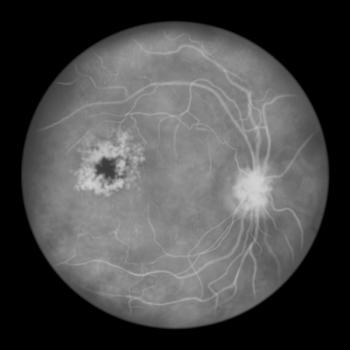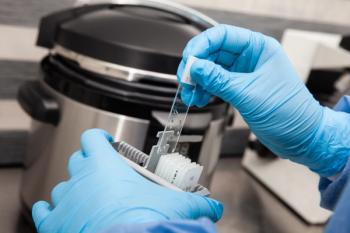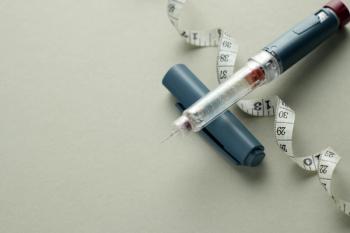
First Nationwide Seroprevalence Study of HDV in the US Offers Prevalence of HDV Among HBsAg-Positive Specimens
Key Takeaways
- The study found a 2.2% HDV seroprevalence among HBsAg-positive specimens in the US, using Quest Diagnostics' national data.
- HDV requires HBV for replication, and infection can occur as a coinfection or superinfection, leading to severe hepatitis.
The authors believe the results may serve as a foundation for hepatitis D virus (HDV) testing among hepatitis B virus surface antigen (HBsAg)-positive specimens.
Data show that the seroprevalence of hepatitis D virus (HDV) antibodies among hepatitis B virus (HBV) surface antigen (HBsAg)-positive specimens was approximately 2.2%, and among them, 28% were also positive for HDV RNA. This study, which was published in Journal of Viral Hepatitis, is the first nationwide seroprevalence study within the US that examined HBsAg-positive samples collected from 10 Health and Human Services (HHS) regions, potentially offering an overview of HDV prevalence in the US through HbsAg-positive remnant specimens.1
Hepatitis D is an inflammation of the liver that is caused by HDV, which requires HBV to replicate. Additionally, HDV infection can be acquired simultaneously with HBV as a coinfection or later as a superinfection in patients who have chronic hepatitis B. Simultaneous infection can lead to mild-to-severe hepatitis with signs and symptoms that are indistinguishable from those of other types of acute viral hepatitis infections. These features typically appear approximately 3 to 7 weeks after initial infection (eg, fever, fatigue, loss of appetite, nausea and vomiting, and jaundice, among others). Both forms of the infection may result in severe viral hepatitis; however, clinical awareness and diagnosis are considered below quality. Therefore, a greater need is present for the determination of HDV infection.1,2
Further, HDV seroprevalence rates vary widely depending on the country, and outside of the US, it is recommended that testing for detection is to screen all HBsAg-positive specimens for HDV antibodies and to test antibody-positive specimens for HDV RNA. Within the US, HDV prevalence is widely considered low compared with other countries, with current estimates inconsistent among research.1,2
The study’s objective was to estimate the prevalence of HDV infection within the US in HBsAg-positive specimens, ultimately with the goal of improving HDV diagnosis. Unique deidentified remnant HBsAg-positive specimens were submitted for routine clinical testing to Quest Diagnostics, representing all 10 HHS regions, were included. Testing was conducted from July 2023 to June 2024. This consisted of reflex testing of HBsAg-positive specimens for HDV antibody testing and further testing of 5251 positive specimens for HDV RNA.1
Overall, the study authors observed that 114 specimens were HDV antibody-positive, resulting in a seroprevalence of about 2.2% (95% CI: 1.8%-2.6%). Seroprevalences were not considered significantly different among the regions (P > .05).1 In an interview with Pharmacy Times®, study authors Robert Gish, MD, principal of Robert G. Gish Consulting LLC and medical director of the Hepatitis B Foundation; and Elizabeth Marlowe, BS, MS, PhD, D (ABMM), executive scientific director and head of research and development at Quest Diagnostics Infectious Diseases and Immunology, explain how these data can contribute to further research.
“Our study found an overall national HDV seroprevalence rate of 2.2%. This was established using [HBsAg-positive] remnants from participants associated with clinician-requested HBV testing in proportion to HHS regional population sizes. HDV is considered a defective or satellite virus because it cannot replicate in someone without the simultaneous presence of an active HBV infection,” the study authors wrote. “This HDV seroprevalence study takes advantage of the extensive reach of Quest Diagnostics and is truly national in scope. Previous individual HDV seroprevalence studies have been limited by geographic restrictions and/or have utilized specimens from higher-risk subpopulations of participants.”
Among the 5251 specimens, approximately 45% were from female patients. The authors reported not observing any statistically significant differences between the 2 groups.1 “About 45% of the population was female, and we did not find statistically significant differences by age or HHS region. The largest number of HDV Ab-positive specimens was found in HHS region 9, which includes California, Nevada, and Arizona,” the study authors wrote.
HDV RNA testing was performed for 107 of the 114 seropositive specimens who had a sufficient remaining volume for further testing. Approximately 28% (n = 30) were also positive for HDV RNA. This indicated active HDV infection among this subpopulation, according to the authors. For the 23 positive specimens that had qualitatively detectable RNA levels, the median viral load was about 4.21 logs (range: 1.97–6.87 logs, or 94–7,480,000 IU/mL). Among those specimens with a quantifiable viral load, 39.1% (n = 9) were in HHS region 5, 13% (n = 3) were in region 8, and the remaining 47.8% (n = 11) were in regions 3, 4, 6, 7, and 9.1
“Based on Quest Diagnostics’ extensive national testing data, this study provides a baseline for national and HHS regional population-level HDV prevalence in the United States. This type of specimen remnant-based seroprevalence study can provide public health authorities with a tool to track infection rates over time. It also has potential to help measure the effectiveness of pharmaceutical interventions for HDV and HBV,” the study authors wrote.
The primary limitation of the study, according to the authors, is the relatively small number of HDV-positive specimens (n = 114).1 They urge that additional HDV seroprevalence studies be conducted to determine which specific US regions would obtain the greatest benefit from future HDV-related interventions. Such research can also characterize patients with HDV according to the medical care provided.1
Regardless of the limitations, the authors emphasized that the study serves as a baseline for both national and regional population-level data from HBsAg-positive samples collected from HHS regions within the US. The research can serve as a foundation for reflex testing among all specimens that are positive for HBsAg to HDV antibody testing.1
“Testing is underutilized and universal HDV antibody testing of HBsAg-positive specimens followed by reflex HDV RNA testing would allow for earlier identification, linkage to care and benefit patients with previously unrecognized HDV infection,” concluded the study authors. "We need comparative research from laboratories like Quest Diagnostics and others that can also survey in detail uninsured, immigrant, and Medicaid patient populations."
REFERENCES
1. Marlowe EM, Swanson BE, Realegeno SE, Meyer WA, Gish R, Kagan RM. Epidemiological Burden of Hepatitis Delta Virus in the United States. Wiley. J Viral Hepat. 2025; 32:e70029. doi.org/10.1111/jvh.70029
2. World Health Organization. Hepatitis D. Accessed May 13, 2025. https://www.who.int/news-room/fact-sheets/detail/hepatitis-d
Newsletter
Stay informed on drug updates, treatment guidelines, and pharmacy practice trends—subscribe to Pharmacy Times for weekly clinical insights.


























































































































































































































